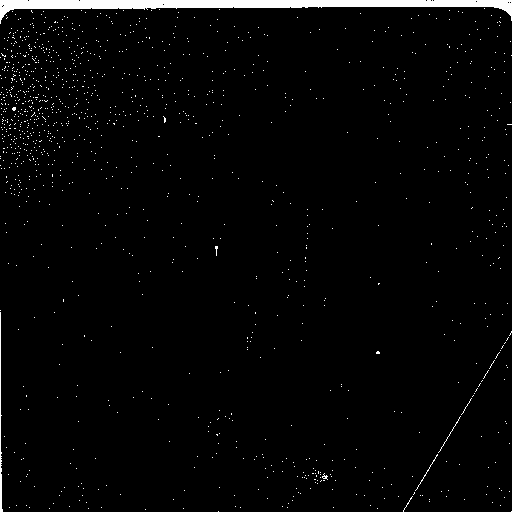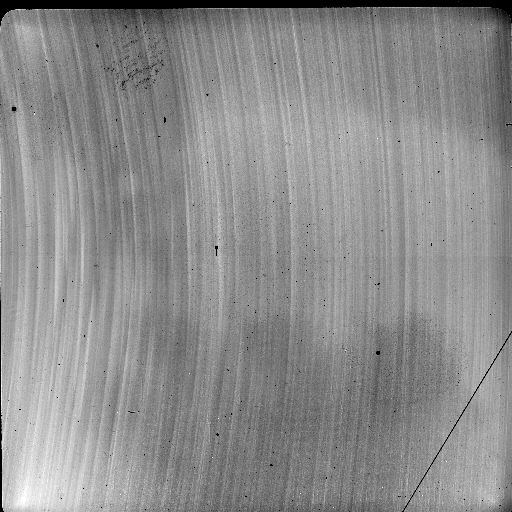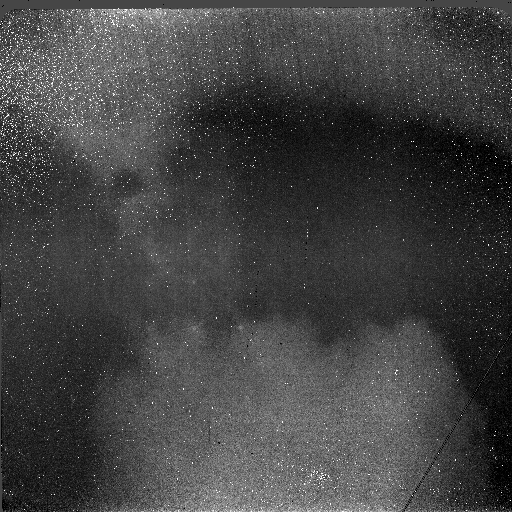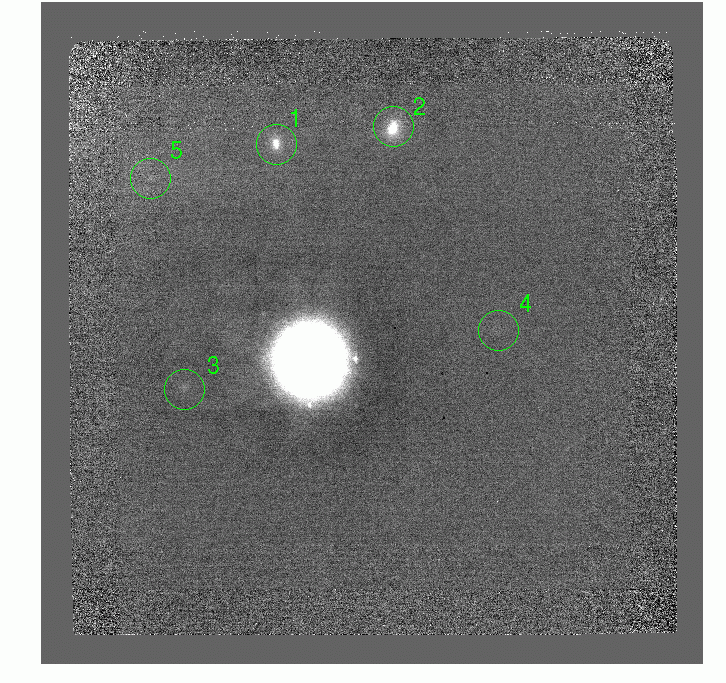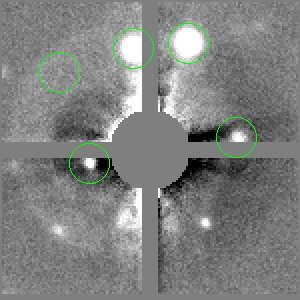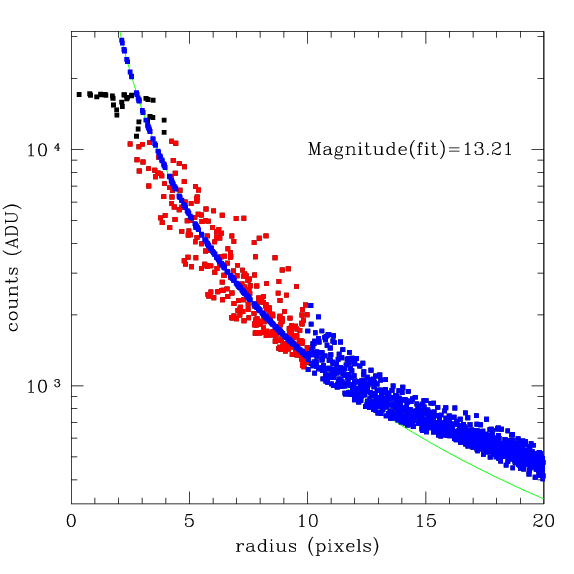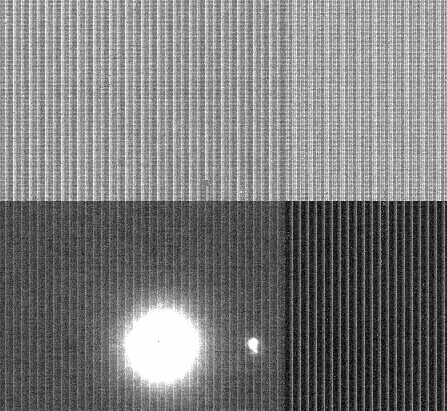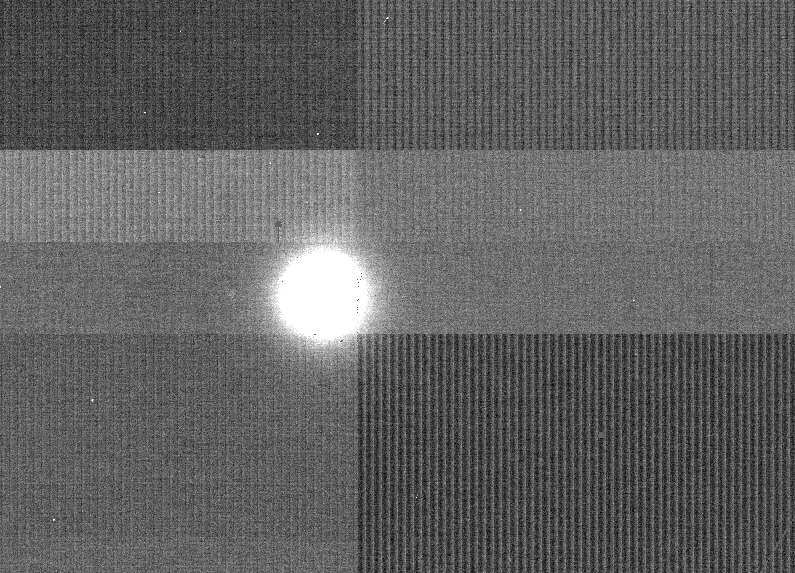
Make a mask:
There are numerous cosmetic defects on the NIRI chip.
To mask these, the all data images were examined
in parallel. Any pixel with a value above or below certain
threshold was deemed a hot pixel or a dead pixel
This pixel was so flagged and discarded from
future analyses.
Note the pixels in the bright guide star
are always above the high threshold, but because
of the dithering pattern, it moves around.
A pixel is deemed bad if it is too hot or too cold
in more than 20% of the images.
The mask is show at right; the FITS
version can be downloaded
here
